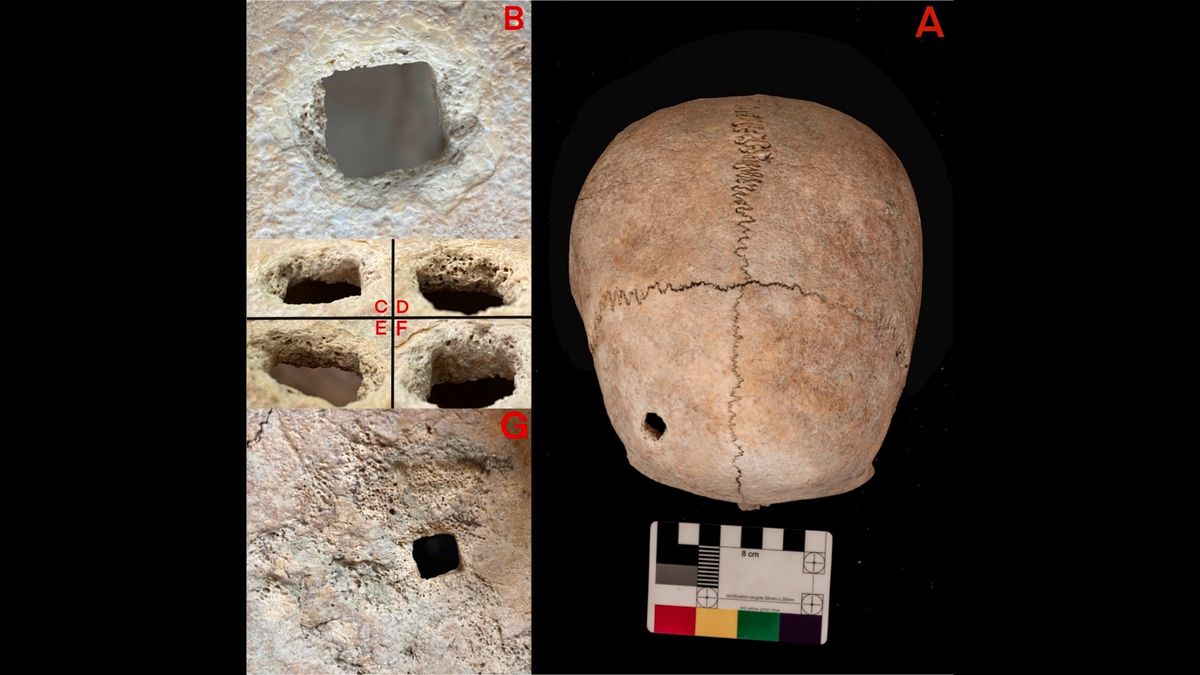Saying it With Flowers—14,000 Years Ago
http://news.sciencemag.org/sciencenow/2 ... tml?ref=hp
by Michael Balter on 1 July 2013, 5:56 PM | 0 Comments
Flowery repose. The prehistoric graves of a man and boy found in an Israeli cave (left) were apparently lined with plants and flowers (artist's reconstruction, right.)
Credit: D. Nadel et al., PNAS Early Edition (2013)
About 14,000 years ago, a band of hunter-gatherers began hanging out in prime real estate in a cave on the slopes of Mount Carmel, in what today is Israel. The five-chambered grotto, now called Raqefet Cave, overlooks the Mediterranean Sea. The hunter-gatherers who lived here were probably the ancestors of the world's first farmers, but now they have been given another important distinction: The first humans to bury their dead with flowers.
Scientists have debated for years just when early humans began saying it with flowers. In the 1970s, researchers excavating the 50,000-year-old grave of a Neandertal buried at Shanidar Cave in northern Iraq, found evidence that it had been festooned with flowers. The claim, which led some archaeological pundits to suggest that Neandertals were the original flower children, was based on pollen of various flower species in the grave; but more recently other archaeologists have argued that burrowing animals probably brought the pollen into the burial site. Today, few archaeologists accept Shanidar as an example of flower burial (and some even question whether Neandertals deliberately buried their dead.)
Since 2005, a research team led by Dani Nadel, an archaeologist at the University of Haifa in Israel, has been excavating at Raqefet Cave, one of a number of sites frequented by prehistoric humans on the slopes of Mount. Carmel. Beginning about 13,700 years ago, Raqefet was occupied by the Natufians, who were widespread in the Mediterranean areas of the Near East and may have been the ancestors of the first farmers. The Natufians were the earliest known prehistoric peoples to systematically bury their dead together in cemeteries near the huts they apparently lived in, rather than in isolated and sporadic burial pits; their burials often featured grave goods such as beads, deposits of red ochre, and stone tools.
Now it looks like the Natufians honored their dead with flowers, too, as Nadel reports online this week in the Proceedings of the National Academy of Sciences. Of the 29 skeletons excavated so far at Raqefet, four individuals, radiocarbon dated between 13,700 and 11,700 years ago, show what the team says are clear signs of having been buried on a literal bed of flowers. To be sure about this, the team brought in a number of experts to help it study the graves. The researchers found that the graves, which include an unusual double burial of an adult male and adolescent boy, had been cut into the limestone bedrock that makes up the floor of the cave, and then lined with a thin layer of mud. Pressed into the mud lining were the impressions of the stems of a number of plant species, some of which the team was able to identify. The plants included Judean sage and members of the mint and figwort family, aromatic plants that blossom into colorful flowers in the spring, and some of which are still found today on the slopes of Mount Carmel.
The evidence from the mud impressions was bolstered by the finding of thousands of microscopic plant fossils, called phytoliths, in the four burials as well as in several others. The phytoliths, which can sometimes be identified down to the species level, came from various grasses, shrubs, reeds, and sedges. The team concludes from this evidence, that the graves were lined not only with flowers but other plants that provided lush bedding for the dead.
But did flowers have the same symbolic meanings for the Natufians as they do for us? Nadel and his colleagues believe so, citing psychological studies concluding that flowers trigger positive emotional reactions on an unconscious, physiological level that transcends cultural invention. The team also cites evidence from other archaeological sites that some flowering plants were domesticated as early as 5,000 years ago, ostensibly as decoration. The researchers argue that the use of flowers at funerals may have served "as a means of enhancing group identity and solidarity," similar to the use of other grave goods such as beads to send the dead on their way. Such group solidarity, the team notes, would have been especially important at a time when hunter-gatherers in the Near East were beginning to congregate together in ever more sedentary and cohesive communities as a prelude to their eventual invention of agriculture.
The team's work provides "multidimensional evidence" for the use of aromatic plants and flowers to line graves, and is "the first time such evidence has been presented," says Leore Grosman, an archaeologist at The Hebrew University of Jerusalem who has excavated at a nearby Natufian site also known for its burials. The findings, she adds, provide "important clues to the views about death and dying in the Natufian culture," including the possibility that the lush flower burials were designed to make the dead "comfortable" and a sign of "concern about their well-being in the after-life."



